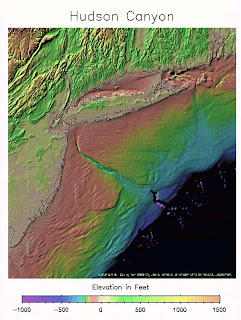Will someone please think of the canaries?
 One of the most dangerous aspects of the many extraordinarily dangerous aspects of mining is the pervasive risk of deadly gas in the highly confined spaces underground. Pockets of methane and carbon monoxide, both odorless, colorless gases, were occasionally encountered by the miners as they dug deeper and deeper and the only way a person might know they were in danger was through the use of a simple early warning system - the common yellow canary. Before the gas became deadly to humans, it would knock the poor canary on its ass, alerting the miners to their emergency. Though low-tech, this live-saving (for everyone but the canary) method was in use until as recently as 1986.
One of the most dangerous aspects of the many extraordinarily dangerous aspects of mining is the pervasive risk of deadly gas in the highly confined spaces underground. Pockets of methane and carbon monoxide, both odorless, colorless gases, were occasionally encountered by the miners as they dug deeper and deeper and the only way a person might know they were in danger was through the use of a simple early warning system - the common yellow canary. Before the gas became deadly to humans, it would knock the poor canary on its ass, alerting the miners to their emergency. Though low-tech, this live-saving (for everyone but the canary) method was in use until as recently as 1986.With that in mind, does this bother anyone else?
Downtown Austin reopens after dead birds found(Link)
AUSTIN — More than 10 blocks of downtown along Congress Avenue reopened this afternoon after police said the area where 63 grackles, sparrows and pigeons were found dead and sickened posed no danger to people.
Meanwhile, in other possibly gas-related news, the foul gas-like odor that hung over New York yesterday still lacks a confirmed source, and speculation abounds. The most alarmist entails new terrorist plots, either successful in an as yet undetermined fashion, or unsuccessful because, well, we're still alive.
 Yet there are sources of gas release that are known, and I find even more likely. Beginning in the lovely harbor nestled between New York and New Jersey and extending four hundred miles into the Atlantic Ocean is the Hudson Submarine Canyon, and I'm pointing my as yet un-pulled finger there.
Yet there are sources of gas release that are known, and I find even more likely. Beginning in the lovely harbor nestled between New York and New Jersey and extending four hundred miles into the Atlantic Ocean is the Hudson Submarine Canyon, and I'm pointing my as yet un-pulled finger there.
Why might this be the source of the foul odor? With rising temperatures, trapped methane is escaping from the ocean floor in much greater amounts than we are accustomed to. So much so, that according to the US maritime industry sources oil tankers are reporting their on board methane sensors are going off despite no leaks in their cargo holds, because the sensors are detecting ambient methane being released from the ocean seabed.
Methane is odorless so it wouldn't be directly responsible for the stank that New York City and Jersey City experienced Monday, but when the methane starts bubbling up to the surface it is often accompanied by hydrogen sulfide, a byproduct of the bacterial decomposition that occurs on the ocean floor. And the Hudson Submarine Channel would be particularly susceptible to extra-stinky decomposition, as many speculate it is still covered with the sludge and trash of several centuries of the inhabitants of New York City dumping their garbage and sewage directly into the harbor.
Not normally one to be particularly upset by the odors of New York urban living, this methane release hypothesis is concerning because methane has twenty-times the heat-trapping effect of carbon dioxide, and is the second most responsible gas contributing to global warming. If we're venting enough methane to stinkify our entire metro-area, we're venting some serious methane. And the more methane we release, the more the world warms, and the more the world warms, the more methane is released from the ocean floor and from the melting permafrost...
The sheer volume of near-surface methane that could rapidly be released into the atmosphere would have an impact similar to that seen when someone throws gasoline on an already warm fire, dramatically hastening the climate changes we're most worried about. And while I'm just a short hairy Jew writing a self-indulgent blog, unusual gassy smells around New York (and also California) and birds falling dead out of the sky in Austin appear to me to be somewhat portentous.
I'm just saying....
 Yet there are sources of gas release that are known, and I find even more likely. Beginning in the lovely harbor nestled between New York and New Jersey and extending four hundred miles into the Atlantic Ocean is the Hudson Submarine Canyon, and I'm pointing my as yet un-pulled finger there.
Yet there are sources of gas release that are known, and I find even more likely. Beginning in the lovely harbor nestled between New York and New Jersey and extending four hundred miles into the Atlantic Ocean is the Hudson Submarine Canyon, and I'm pointing my as yet un-pulled finger there.Why might this be the source of the foul odor? With rising temperatures, trapped methane is escaping from the ocean floor in much greater amounts than we are accustomed to. So much so, that according to the US maritime industry sources oil tankers are reporting their on board methane sensors are going off despite no leaks in their cargo holds, because the sensors are detecting ambient methane being released from the ocean seabed.
Methane is odorless so it wouldn't be directly responsible for the stank that New York City and Jersey City experienced Monday, but when the methane starts bubbling up to the surface it is often accompanied by hydrogen sulfide, a byproduct of the bacterial decomposition that occurs on the ocean floor. And the Hudson Submarine Channel would be particularly susceptible to extra-stinky decomposition, as many speculate it is still covered with the sludge and trash of several centuries of the inhabitants of New York City dumping their garbage and sewage directly into the harbor.
Not normally one to be particularly upset by the odors of New York urban living, this methane release hypothesis is concerning because methane has twenty-times the heat-trapping effect of carbon dioxide, and is the second most responsible gas contributing to global warming. If we're venting enough methane to stinkify our entire metro-area, we're venting some serious methane. And the more methane we release, the more the world warms, and the more the world warms, the more methane is released from the ocean floor and from the melting permafrost...
The sheer volume of near-surface methane that could rapidly be released into the atmosphere would have an impact similar to that seen when someone throws gasoline on an already warm fire, dramatically hastening the climate changes we're most worried about. And while I'm just a short hairy Jew writing a self-indulgent blog, unusual gassy smells around New York (and also California) and birds falling dead out of the sky in Austin appear to me to be somewhat portentous.
I'm just saying....


0 Comments:
Post a Comment
<< Home